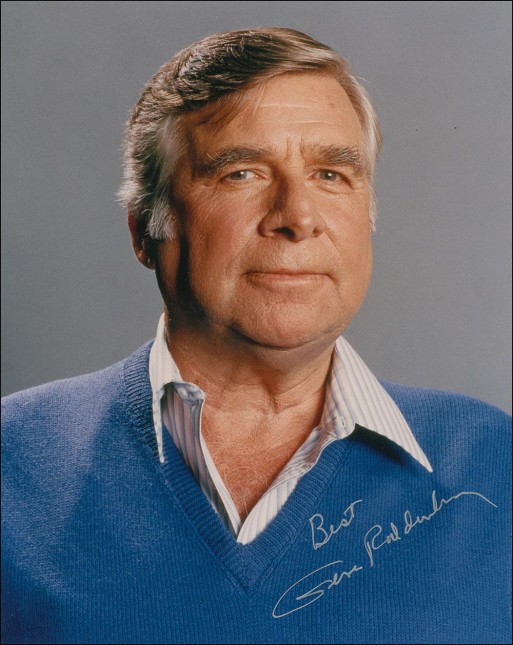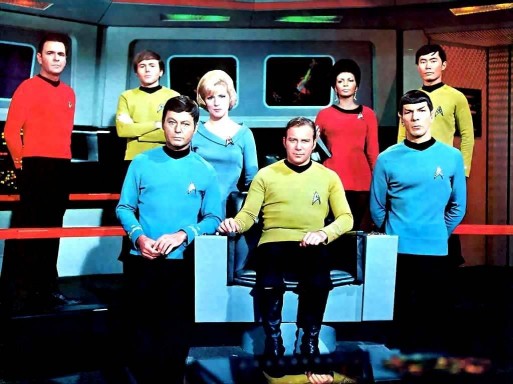
Gene Roddenberry
(credit: liveauctiongroup.net)
There are a few shows in the history of American television as iconic and groundbreaking as “Star Trek.” To the millions of fans around the world, Star Trek is more than a series, but rather a vision of a brighter future in which our human race has learned to live in peace, eradicated poverty and disease, perfected space travel and reached to the limitless possibilities of the cosmos. It seems fitting that upon the death of Gene Roddenberry, the original creator of the show had a part of his remains launched into space.
Born in El Paso, Texas in 1921, Eugene Wesley Roddenberry was raised in Los Angeles where he studied law enforcement at Los Angeles City College. Later, he joined the Army Air Corps and flew 89 missions in World War II. Gene began his writing career selling stories to flying magazines and submitting poetry to publications while stationed in the South Pacific. A true Renaissance man with a multitude of interests, he studied aeronautical engineering and pre-law at the University of Miami and literature at Columbia University; was awarded Distinguished Flying Cross and the Air Medal and received numerous awards including a Hugo and an Emmy as a writer and producer of “Star Trek.”

Star Trek Original Series Crew
(credit: startrekwallpaper.com)
Through “Star Trek,” Gene wanted to usher in a new era of television that celebrated discovery, diversity and tolerance. In 1966, when the “Original Series” version premiered during the time of the civil rights movement, it featured a multiracial crew of men and women including those of African-American, Japanese, Russian and extraterrestrial descent. The third season episode, “Plato’s Stepchildren,” even boasted of having the first interracial kiss on television. Unafraid to delve into controversial topics expertly woven into the fabric of science fiction milieu, “Star Trek” reflected important social issues of the time.
“Star Trek was an attempt to say that humanity will reach maturity and wisdom on the day that it begins not just to tolerate, but take a special delight in differences in ideas and differences in life forms. […] If we cannot learn to actually enjoy those small differences, to take a positive delight in those small differences between our own kind, here on this planet, then we do not deserve to go out into space and meet the diversity that is almost certainly out there.”
― Gene Roddenberry (credit: Goodreads.com)
Besides wooing a multitude of fans with innovative and exciting stories, the show had fostered the love of science and technology in many young viewers. “Original Series”’ Lieutenant Uhura had inspired the first African-American woman astronaut Dr. Mae Jamison. “Images show us possibilities,” Jamison said in her 1996 interview with Stanford Today, “A lot of times, fantasy is what gets us through to reality.”

Memorial spaceflight launched by Celestis
(credit: celestis.com)
For almost half a century, Gene Roddenberry’s creation has inspired fans to venture, “Where no one has gone before” and even though Gene had never journeyed into space during his lifetime, a part of him is there among the stars. After his death in 1991, a portion of Roddenberry’s ashes voyaged and returned to Earth aboard the space shuttle Columbia. In 1997, Celestis, the first company to specialize in memorial spaceflights was commissioned by Gene’s widow Majel Barrett to carry a vial containing seven grams of Roddenberry’s remains into space along with the remains of Timothy Leary and 22 other people aboard a Pegasus XL rocket. In 2016, another memorial spaceflight is planned to take the remains of Majel Barrett to join her husband among the stars.

 Returning to the Stars
Returning to the Stars


 “Other Side” Documentary Directed by Carter Oakley and Heather Hogan
“Other Side” Documentary Directed by Carter Oakley and Heather Hogan
 The Other Death in the Family
The Other Death in the Family















